Thomas Aspinall Burke was born at 7 Mather Lane, in 1890. Dubbed the ‘Lancashire Caruso’, he enjoyed a career as a fine operatic tenor.
A photograph and text about Thomas Burke.
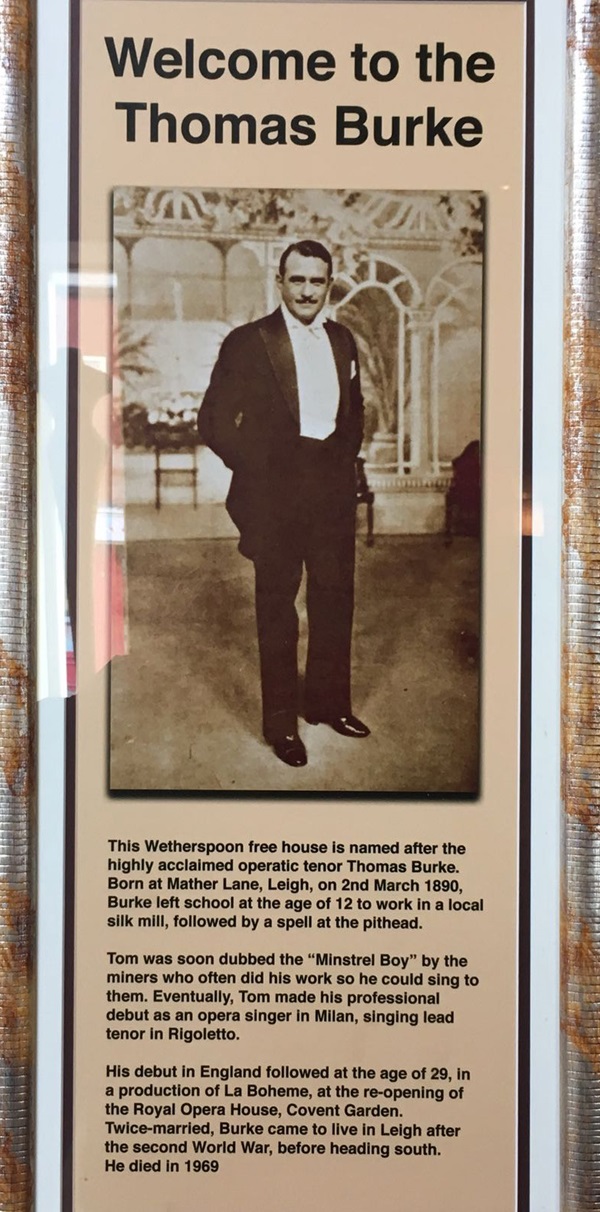
The text reads: This Wetherspoon free house is named after the highly acclaimed operatic tenor Thomas Burke. Born at Mather Lane, Leigh, on 2 March 1890, Burke left school at the age of 12 to work in a local silk mill, followed by a spell at the pithead.
Tom was dubbed the “Minstrel Boy” by the miners who often did his work so he could sing to them. Eventually, Tom made his professional debut as an opera singer in Milan, singing lead tenor in Rigoletto.
His debut in England followed at the age of 29, in a production of La Boheme, at the re-opening of the Royal Opera House, Covent Garden. Twice-married, Burke came to live in Leigh after the second World War, before heading south. He died in 1969.
Photographs of Thomas Burke.
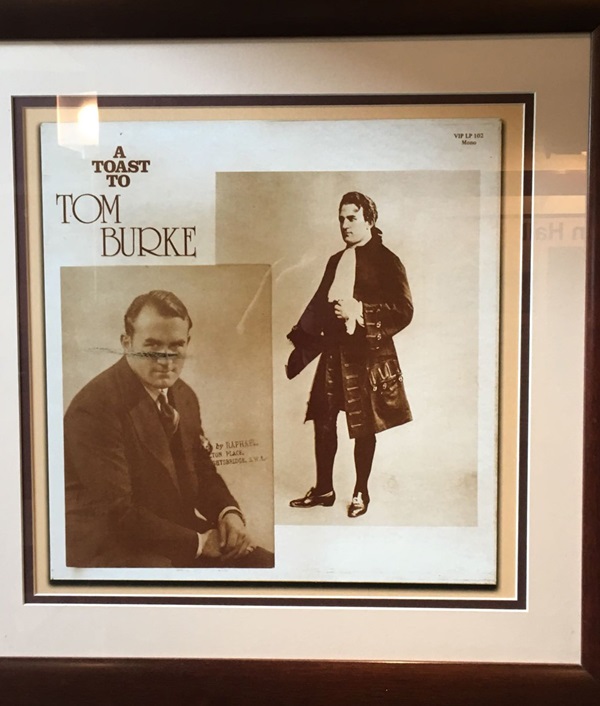
Photographs, prints and text about James Hilton.
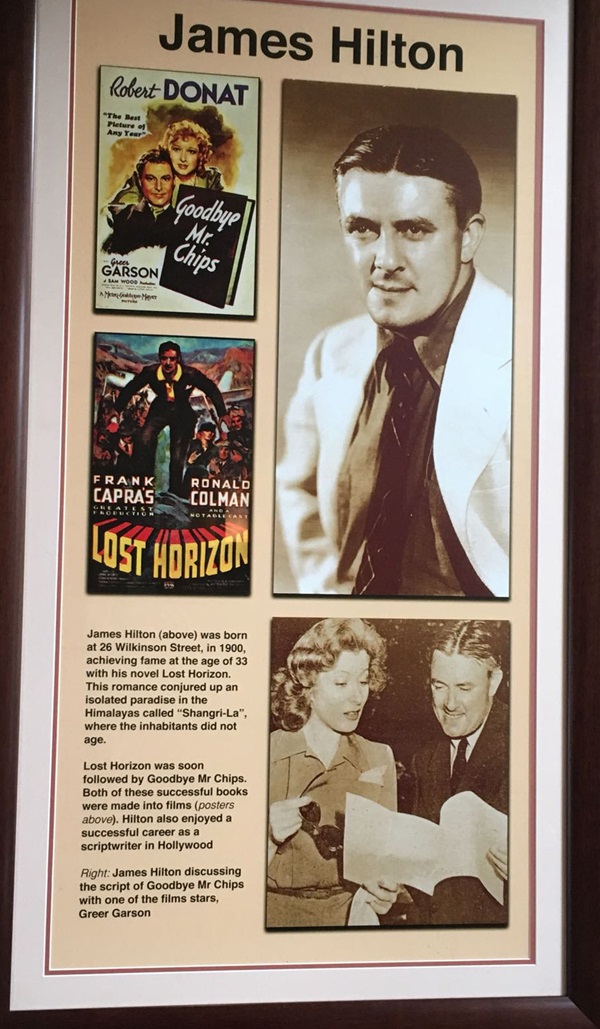
The text reads: James Hilton (above) was born at 26 Wilkinson Street, in 1900, achieving fame at the age of 33 with his novel Lost Horizon. This romance conjured up an isolated paradise in the Himalayas called Shangri-La, where the inhabitants did not age.
Lost Horizon was soon followed by Goodbye Mr Chips. Both of these successful books were made into films (posters above). Hilton also enjoyed a successful career as a scriptwriter in Hollywood.
Right: James Hilton discussing the script of Goodbye Mr Chips with one of the films starts, Greer Garson.
Photographs and text about cotton-spinning and coal-mining.
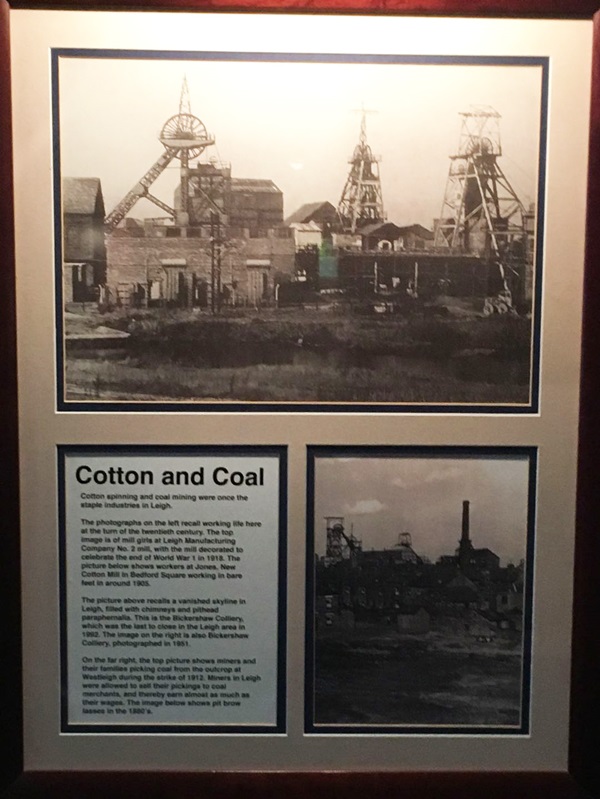
The text reads: Cotton-spinning and coal-mining were once the staple industries in Leigh.
The photographs on the left recall working life here at the turn of the twentieth century. The top image is the mill girls at Leigh Manufacturing Company No 2 mill, with the mill decorated to celebrate the end of World War 1 in 1918. The picture below shows workers at Jones, New Cotton Mill in Bedford Square working in bare feet in around 1905.
The picture above recalls a vanished skyline in Leigh, filled with chimneys and pithead paraphernalia. This is the Bickershaw Colliery, which was the last to close in the Leigh area in 1992. The image on the right is also Bickershaw Colliery, photographed in 1951.
On the far right, the top picture shows miners and their families picking coal from the outcrop at Westleigh during the strike of 1912. Miners in Leigh were allowed to sell their pickings to coal merchants and thereby was almost as much as their wages. The image below shows pit brow lasses in the 1880’s.
Photographs and text about the history of Leigh.
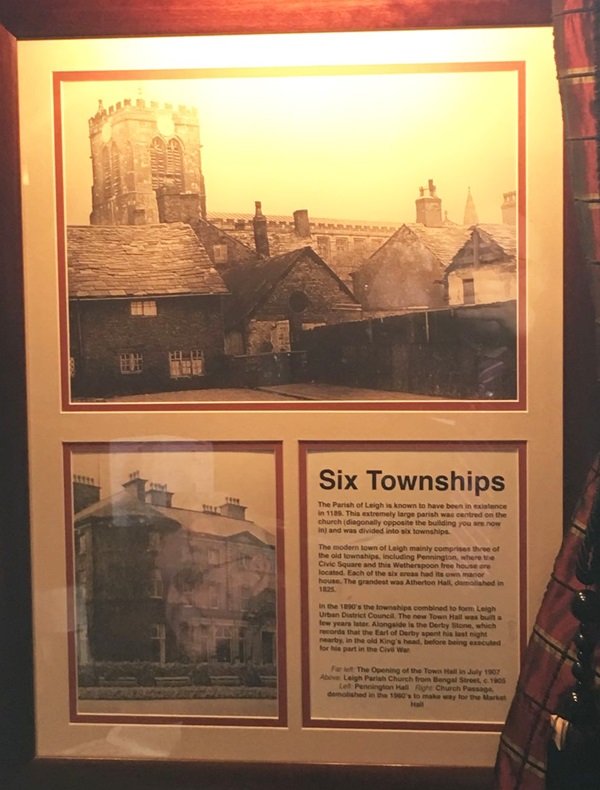
The text reads: The parish of Leigh is known to have been in existence in 1189. This extremely large parish was centred on the church (diagonally opposite the building you are now in) and was divided into six townships.
The modern town of Leigh mainly comprises three of the old townships, including Pennington, where the Civic Square and this Wetherspoon free house are located. Each of the six areas has its own manor house. The grandest was Atherton Hall, demolished in 1625.
In the 1890s the townships combined to form Leigh Urban District Council. The new Town Hall was built a few years later. Alongside is the Derby Stone, which records that the Earl of Derby spent his last night nearby, in the old King’s Head, before being executed for his part in the Civil War.
Far left: The opening of the Town Hall in July, 1907
Above: Leigh Parish Church from Bengali Street, c1905
Left: Pennington Hall Right: Church Passage demolished in the 1960s to make way for the Market Hall.
A photograph of the first steam fire engine in Leigh, c1898, the year Leigh Fire Brigade was formed, replacing the voluntary Brigade formed in the 1860s.
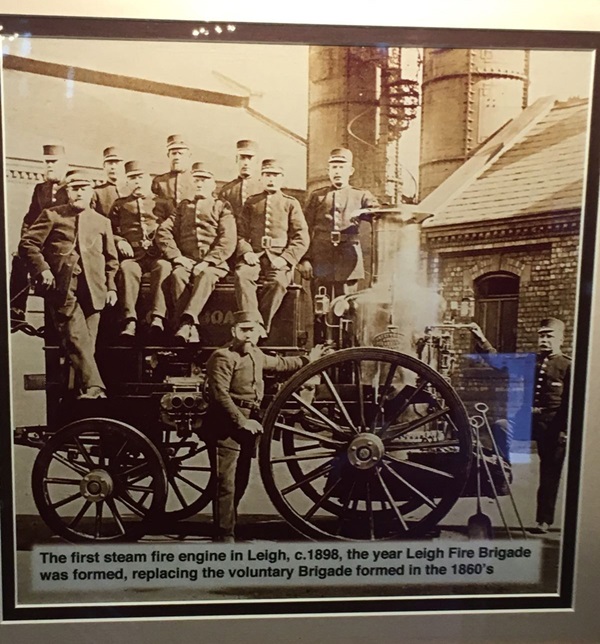
Photographs and text about Leigh’s turnpikes.
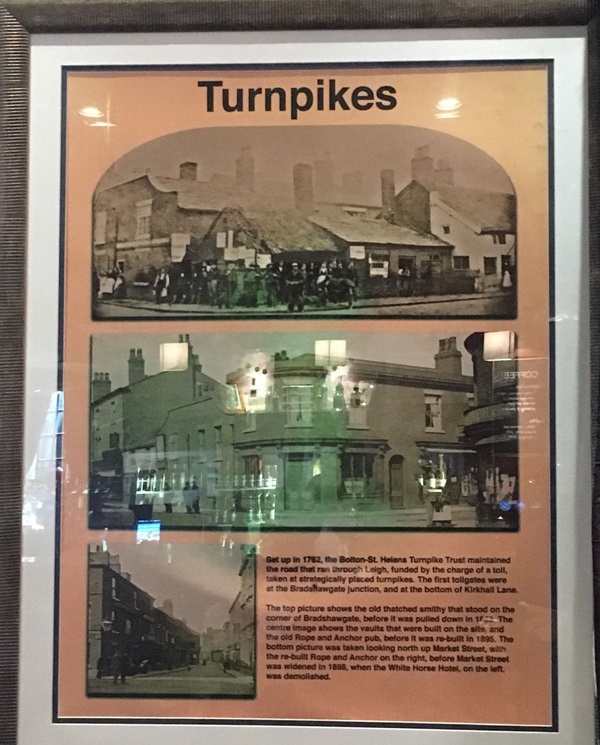
The text reads: Set up in 1762, the Bolton-St Helens Turnpike Trust maintained the road that ran through Leigh, funded by the charge of a toll, taken at strategically placed turnpikes. The first tollgates were at the Bradshawgate junction, and at the bottom of Kirkhall Lane.
The top picture shows the old thatched smithy that’s stood on the corner of Bradshawgate, before it was pulled down in 1853. The centre image shows the vaults that were built on the site, and the old Rope and Anchor pub, before it was re-built in 1895. The bottom picture was taken looking north up Market Street, with the re-built Rope and Anchor on the right, before Market Street, was widened in 1898, when the White Horse Hotel, on the left, was demolished.
An illustration, photograph and text about Atherton Hall.
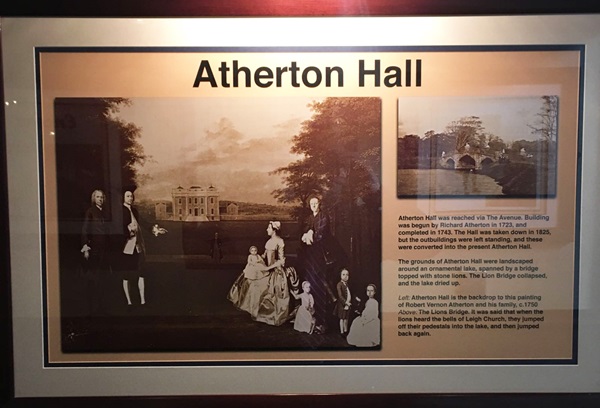
The text reads: Atherton Hall was reached via The Avenue. Building was begun by Richard Atherton in 1723, and completed in 1743. The hall was taken down in 1825, but the outbuildings were left standing, and these were converted into the present Atherton Hall.
The grounds of Atherton Hall were landscaped around an ornamental lake, spanned by a bridge topped with stone lions. The Lion Bridge collapsed, and the lake dried up.
Left: Atherton Hall is the backdrop to this painting or Robert Vernon Atherton and his family, c1750
Above: The Lions Bridge. It was said that when the lions heard the bells of Leigh Church, they jumped off their pedestals into the lake, and then jumped back again.
External photograph of the building – main entrance.

If you have information on the history of this pub, then we’d like you to share it with us. Please e-mail all information to: pubhistories@jdwetherspoon.co.uk